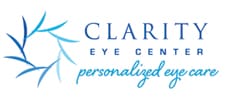Diabetes Awareness Month
Optometrists and ophthalmologists are eye care specialists who play a key role in the early detection and timely treatment of diabetes-related eye diseases such as retinopathy, glaucoma, and cataracts. These conditions can be avoided or delayed with annual dilated eye examinations and treatment if needed. Clarity Eye Center would like to provide you with the…
Read MoreIt’s easy to take your eyesight for granted.
It’s easy to take your eyesight for granted. Diabetes is the leading cause of vision loss in people 18–64 years old. And there are no obvious signs or symptoms. But the great news is an annual routine eye exam could prevent 95% of vision loss caused by diabetes.
Read MoreIt’s Diabetes Awareness Month. Be Aware.
Blurry vision can be one of the first signs of diabetes, so eye doctors are often the first health professionals to diagnose the disease. However, diabetes can be diagnosed in an eye exam even if no symptoms are noticeable.
Read MoreDiabetes and Your Eyes
How can you tell if diabetes is affecting your eyes? Your eyes may seem fine, but having a full, dilated eye exam is the only way to know for sure. Often, there are no warning signs of diabetic eye disease or vision loss when damage first develops. A full, dilated eye exam helps your doctor…
Read MoreDIABETES AWARENESS MONTH
Yes. You should plan to make regular eye doctor visits when you have diabetes. High blood sugar can lead to problems like blurry vision, cataracts, glaucoma, and retinopathy. In fact, diabetes is the primary cause of blindness in adults ages 20 to 74.
Read MoreRemember: Diabetes Can Damage Your Eyes
High blood sugar can damage the tiny blood vessels in your eyes over time. That can lead to an eye disease called diabetic retinopathy. High blood sugar can also lead to cataracts and glaucoma. So take care of your diabetes — and keep up with annual eye exams — to take care of your eyes.
Read MoreNational Diabetes Month
Get a comprehensive vision exam, including a dilated retinal exam, once a year. Many eye problems do not have obvious symptoms. Watch for any changes in your vision. Reduce your risk of visual impairment by keeping your blood glucose level under control and maintaining overall good health.
Read MoreAstigmatism
Astigmatism is irregular shape of the cornea or lens. Normally, the cornea and lens are smooth and curved equally in all directions, helping to focus light rays sharply onto the retina. However, if your cornea or lens is not smooth and evenly curved, this results in unclear vision.
Read MoreOur Locations
ROUND ROCK
4337 Teravista Club Dr.
Round Rock, TX 78665
GEORGETOWN
3204 Northwest Blvd
Georgetown, TX 78628
LEANDER
605 Crystal Falls Parkway
Leander, TX 78641
Monday - Friday
8:00 am - 4:30 pm


